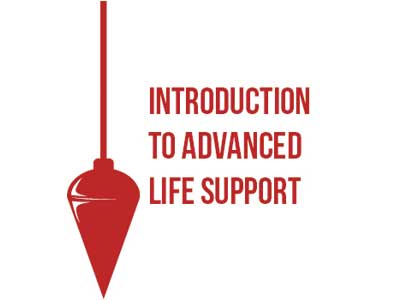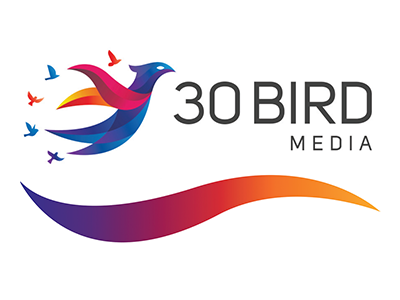 |
GED: Science - Unit 1: Science Practices |
1.00 |
Welcome to Unit 1: Science Practices. Science practices describe the ways we collect, process, and analyze information. Each question on the science test will incorporate science practice within the content area being tested. In this unit, we'll explore some of those science practices. We'll define scientific method, describe variables, and learn about sampling techniques. We'll also explore some of the ways scientists represent and analyze the data they collect. |
 |
Instructional Planning for Teachers |
1.25 |
This course covers the instructional responsibilities of a teacher in the classroom. It is just one of many teacher courses we offer. This course will help you understand what your role as a teacher is in supporting students through instruction and how to support teaching and learning. |
 |
Conducting Meetings: Managing Meetings (Instructor Guide) |
0.67 |
In this course you will learn to: identify the types of meeting leaders and the characteristics of an effective meeting leader. identify the process to follow when making decisions in a meeting, and explain how to identify and minimize group think in meetings.
This Instructor's Edition of this course includes notes and suggestions to assist you in presenting the material, whether in an in-person classroom setting or as an instructor-led online or distance-learning course. It also provides you with the answers to questions found in mid-lesson activities, as well as in the quiz that concludes the course. |
 |
ALS Airway Response - Part Two |
1.00 |
In a twenty minute discussion, Dr. Galton shared some very valuable opinions that were formulated, in a large part, from his many years as a paramedic. Join us for an extension of this discussion. In this second part, Dr. Galton briefly discusses exhalation of CO2, Instrumenting an Airway, Management of Gastric Tubes, and more. You have two attempts to gain a 70% or higher on this exam. Take your time and good luck! |
 |
E-Mail Etiquette: E-Mail Effectiveness |
0.50 |
In this unit, you will learn the importance of considering the recipient before writing an e-mail; the factors to be considered before writing a message, such as your relationship with the recipient, the subject, and the purpose of writing the message; and how to effectively compose messages, anticipating negative recipient reactions such as skepticism and apathy. Finally, you will learn about managing your e-mail, checking your e-mail, handling large volumes of e-mail, helping others manage their e-mail volume, and setting the e-mail program to respond automatically. |
 |
Suicide Prevention (Corrections) |
1.25 |
This course covers suicide prevention measures and suicide prevention organizations as well as the disparities found in suicide data.
After completing this course, you will be able to:
Distinguish the disparities in suicide statistics
Identify the risk factors that can lead to suicide
Apply techniques to help prevent suicide
Describe the work that suicide prevention programs are doing |
 |
Reducing Turnover in Childcare Settings: Strategies for Administrators |
1.00 |
This course covers strategies for administrators to reduce turnover in childcare settings. It is just one out of many educational courses we offer. This course will help you develop new knowledge about the childcare setting and help you better understand your role as an administrator. |
 |
GED: Math - Unit 5: Coordinate Plane |
1.00 |
Welcome to Unit 5: Coordinate Plane. If you've ever graphed points, or read a graph, you've worked with the coordinate plane. In this unit, we'll learn about points, the lines that connect them, and the equations used to create them. |
 |
GED: Math - Unit 6: Polynomials |
1.00 |
Welcome to Unit 6: Polynomials. We first learned about polynomials in Unit 3 when we learned how to simplify expressions. We'll work with them again in this unit, where we'll learn how to perform more complex operations with them. |
 |
Microsoft Project 2019 Complete |
16.00 |
Project 2019 Complete covers the concepts and skills needed for maximum productivity in Project, starting with fundamentals and working up to advanced tools and techniques.
Students will benefit most from this course if they have at least some prior knowledge of project management procedures and practices. It is intended to support you in applying this knowledge through the use of Microsoft Project as a project management tool. Some of the topics covered are:
- Creating a new project schedule from scratch
- Understanding and working with task types, scheduling options, and task constraints
- Working with resources, including scheduling and assignment
- Managing the project schedule in accordance with the critical path and project baseline
- Printing project views, dashboards, and various other kinds of reports.
- Working with the Quick Access Toolbar and advanced calendar topics
- Setting resource working-time exceptions, pooling resources for sharing, and creating resource budget cost items
- Working with multiple baselines and interim plans
- Resolving resource conflicts and scheduling issues
- Consolidating projects using Master projects and Subprojects
- Working with Project Server, Project Online, and SharePoint
- Using Project data in other applications
- Creating final reports
There are no specific prerequisites for this course. However, general computer user knowledge is assumed. Any additional experience having worked with forms and/or databases will be helpful. |
 |
Brick by Brick: Gastroenterology Overview—Part 2 |
1.50 |
Melodie Kolmetz, Paramedic, PA-C, is a multi-disciplinary provider and educator. Her lesson continues with an overview on completing a physical exam. Melodie's experience as a paramedic, physician assistant, and instructor offers an opportunity to learn from one of the best in the industry.
Final Exam: Please read each question carefully. You will have two attempts to gain a 70% or higher on this exam. If you are not successful in two attempts, you are welcome to take the course again to gain the certification. |
 |
Introduction to Risk Management |
1.00 |
This an introductory course that introduces the firefighter to the concepts of risk management. The concepts introduced in this course are intended to create a healthy attitude regarding safety and begins a process of developing a safety-minded culture. The definitions of hazard and risk are defined and the concept of risk management is explained. This explanation of risk management is intended for firefighters who need a rapid and effective method for identifying and mitigating dangers on the fire ground. |
 |
E-Mail Etiquette: E-Mail Messages |
0.50 |
In this course, you will learn how to take advantage of the headers in e-mail messages. You will learn about the “To” field, in which you should type the recipient’s e-mail address. You will also learn when to send carbon copies and blind carbon copies of messages. You will learn the importance of writing a proper subject field for e-mail messages and that the header also includes the date and time of sending messages. Finally, you will learn how to construct the body of an e-mail message, add a personal touch to your messages by including a proper greeting, relay information by placing it in the appropriate order, and use different types of lists effectively. You learned the correct way to write long e-mail messages to keep recipients interested in the information and how to effectively close e-mail messages. |
 |
Creativity |
0.50 |
In this course, you will learn about creativity, including what it is, how to encourage it, and how to utilize it for positive collaboration. |
 |
Conciencia Cognitiva (Spanish) Cognitive Awareness |
1.25 |
Todas las personas han tenido experiencias específicas durante su vida que han moldeado su forma de pensar. Este curso está dirigido a personas que enfrentan pensamientos erróneos y comportamientos autodestructivos debido a experiencias pasadas. Está diseñado para ayudar a las personas a aprender cómo y por qué piensan como lo hacen. También es para enseñar habilidades cognitivas que ayuden con el autodesarrollo. Al final de este curso, esperamos que se convierta en una persona más saludable, feliz y productiva que pueda disolver los obstáculos y limitaciones que a menudo nos imponemos a nosotros mismos.
All people have had specific experiences during their life that have shaped the way they think. This course is geared toward people dealing with faulty thinking and self-destructive behaviors due to past experiences. It is designed to help people learn how and why they think the way they do. It is also to teach cognitive skills to help with self-development. By the end of this course, we hope you become a healthier, happier, more productive person who can dissolve obstacles and limitations that we often place on ourselves. |
 |
GED: Social Studies - Unit 5: Post-Test |
0.25 |
Welcome to Unit 5: Post-Test. This post-test covers civics and government, US history, economics, and world geography. At the end of this post-test is a table that matches each test question to the content it covers. Use it to review and content you haven't mastered. |
 |
GED: Reasoning Through Language Arts - Unit 8: Post-Test |
0.25 |
Welcome to Unit 8: Post-Test. This post-test covers reading comprehension, writing, and editing. At the end of this post-test is a table that matches each question to the content it covers. Use it to review any content that you haven't mastered. |
 |
Microsoft PowerPoint 2019 Complete |
16.00 |
PowerPoint 2019 Complete covers the concepts and skills needed for maximum productivity in PowerPoint, starting with fundamentals and working up to advanced tools and techniques. This course maps to the objectives of the Microsoft Office Specialist exams for PowerPoint 2019. Objective coverage is marked throughout the course, and you can download an objective map for the series.
Students will benefit most from this course if they want to start with the basics and become power users of 2019. The course covers how to create, navigate, format, and customize PowerPoint presentations, as well as advanced features such as animation, transition techniques, adding and formatting media, track corrections, working with multiple presentations, creating custom slide shows, and working with security and sharing options.
The course assumes students know how to use a computer, and that they're familiar with Microsoft Windows. It does not assume that they've used a different version of PowerPoint or any other presentation program before. |
 |
Managerial Leadership: Motivating Employees Through Change (Instructor Guide) |
0.50 |
Your organization’s vision was created to inspire and unite the members of the organization as they work toward achieving common goals. Change can distract employees from the vision because going through the change process can be intensely personal and emotional. Remembering the vision and its purpose can keep your employees focused on their role in the company.
In this course you will learn to: motivate employees through a change and prepare for difficulty, and overcome resistance and resolve conflict.
This Instructor's Edition of this course includes notes and suggestions to assist you in presenting the material, whether in an in-person classroom setting or as an instructor-led online or distance-learning course. It also provides you with the answers to questions found in mid-lesson activities, as well as in the quiz that concludes the course. |
 |
Organizational Communication: Relational Context and Organizations (Instructor Guide) |
0.75 |
The relational context of a communication exchange includes the circumstances, within an organization, that necessitate this exchange between employees. A number of factors affect the relational context, including the status of the employees within the organization, their motivation, and their relationship with other employees. All communication within an organization depends on the intent of the participants.
In this course you will learn to: identify the relational context and the factors that influence it, and identify the different personality types, and develop individual-organizational relationships.
This Instructor's Edition of this course includes notes and suggestions to assist you in presenting the material, whether in an in-person classroom setting, or as an instructor-led online or distance-learning course. It also provides you with the answers to questions found in mid-lesson activities, as well as in the quiz that concludes the course. |
 |
Advanced Interpersonal Communication: Organizational Culture (Instructor Guide) |
1.34 |
An organizational culture is the personality of an organization. This personality is both determined and accepted by the organization’s members. For example, an organization might have a culture that is youthful, energetic, and fast-paced. In this type of culture, decisions are made quickly, and employees are empowered to take action in a wide variety of situations. Another organization might be more straight-laced and policy-oriented. This organization would be much more formal and serious in the way it does business. It is important to recognize and understand the culture of an organization, so that you can determine your fit with the organization.
In this course you will learn: to determine the nature of an organization’s culture, to use the cultural network to your advantage, and identify the characteristics of the roles exhibited in the network, to identify the elements of physical culture that affect interpersonal communication, and to identify the ways in which managers can build a positive culture.
This Instructor's Edition of this course includes notes and suggestions to assist you in presenting the material, whether in an in-person classroom setting or as an instructor-led online or distance-learning course. It also provides you with the answers to questions found in mid-lesson activities, as well as in the quiz that concludes the course. |
 |
Wellness Programs (Corrections) |
0.50 |
This course covers how to create a successful wellness program as well as the factors that can lead to program failure. |
 |
Advanced Interpersonal Communication: Supervisors |
0.75 |
When you think of a supervisor, you probably think of your immediate boss. However, in the workplace, most people have several supervisors. Your workplace might be divided into teams, departments or divisions. Within each level, there is a supervisor to whom you are accountable, even if you do not deal with that person on a day-to-day basis. Company executives and board members can also be considered supervisors because they might have the power to make decisions regarding your employment, salary, promotions, and work assignments. It is important to communicate effectively with all of your supervisors to maintain an efficient workplace and to be able to promote your own ideas for improvements.
In this course you will learn to: identify the types of ineffective supervisors and ways to interact with them, and negotiate a raise with a supervisor and offer an effective resignation. |
 |
Helping Children with ADD Succeed In School-Age Programs: Characteristics and Needs of Children |
1.00 |
Children with ADD regularly experience struggles and challenges at home, in school, and in the community. Without the help of knowledgeable, understanding, and supportive people, they often experience multiple failures and frustrations on a daily basis. In this course, we will explore characteristics and needs of children with ADD. |
 |
Providing Homework Support: Types of Homework Support |
1.00 |
Research indicates there are many different ways to provide effective homework support in school-age programs. When planning a homework support program, it is important for school-age programs to develop a homework philosophy that is consistent with the program’s overall philosophy, and reflects current research on best practices for providing homework help. The homework philosophy should also reflect the needs of parents and children in the program, and strike a balance between homework needs and other experiences that help children grow and learn out-of-school. In this course, we will explore the various types of homework support. |


























